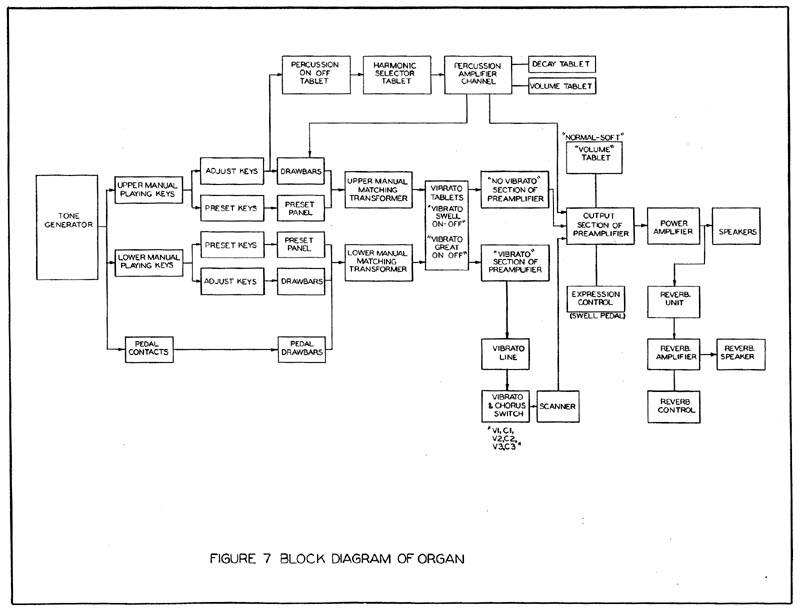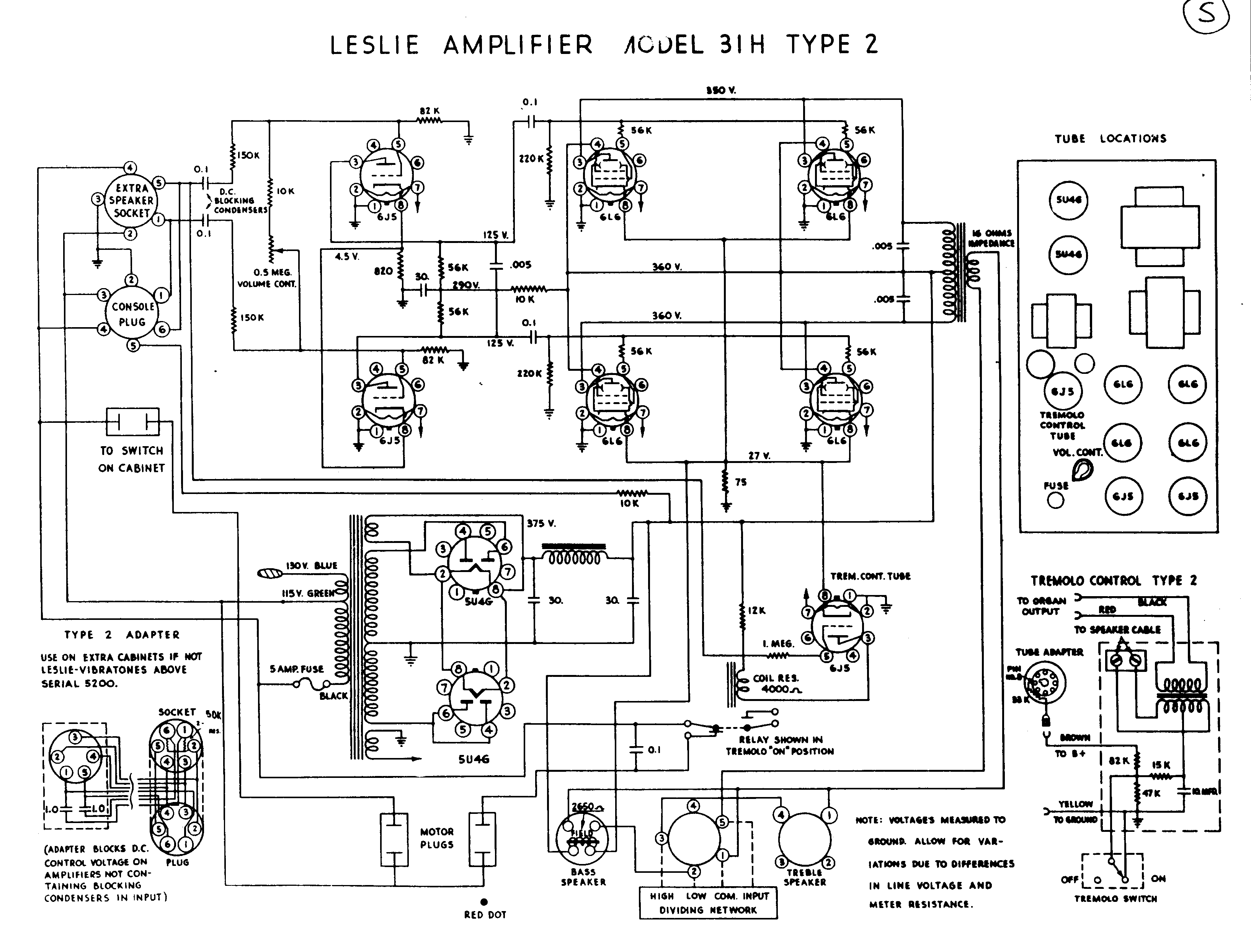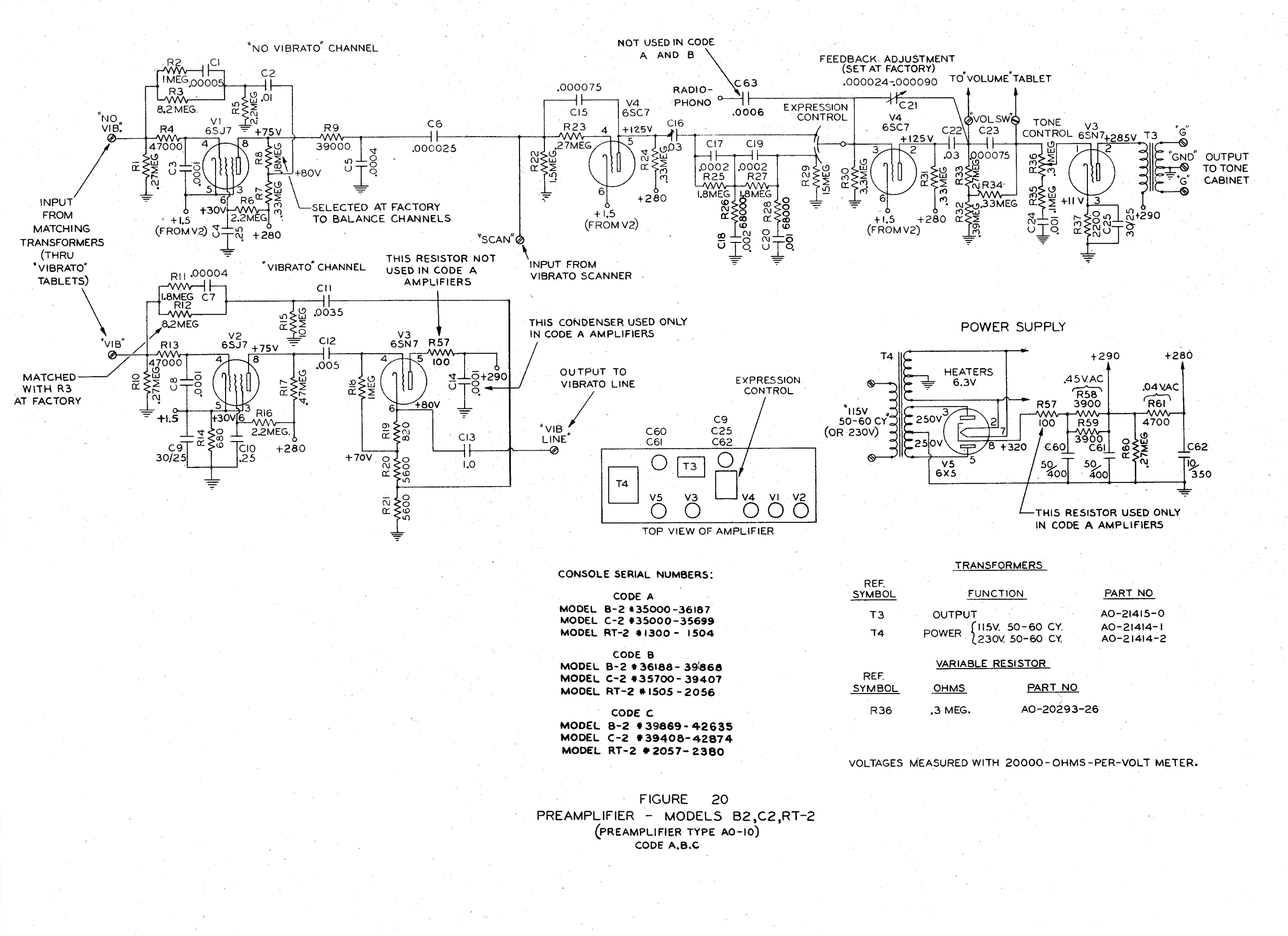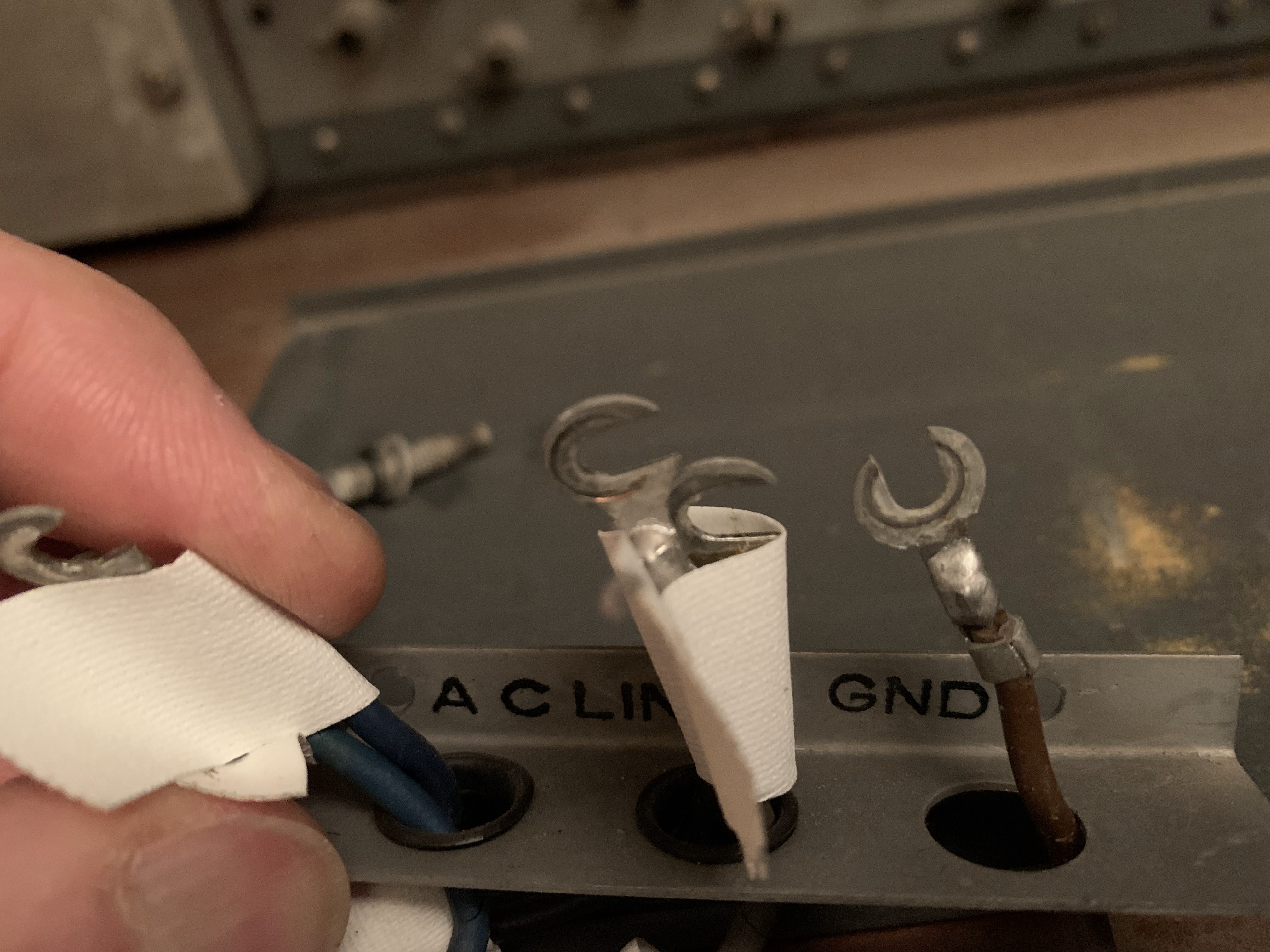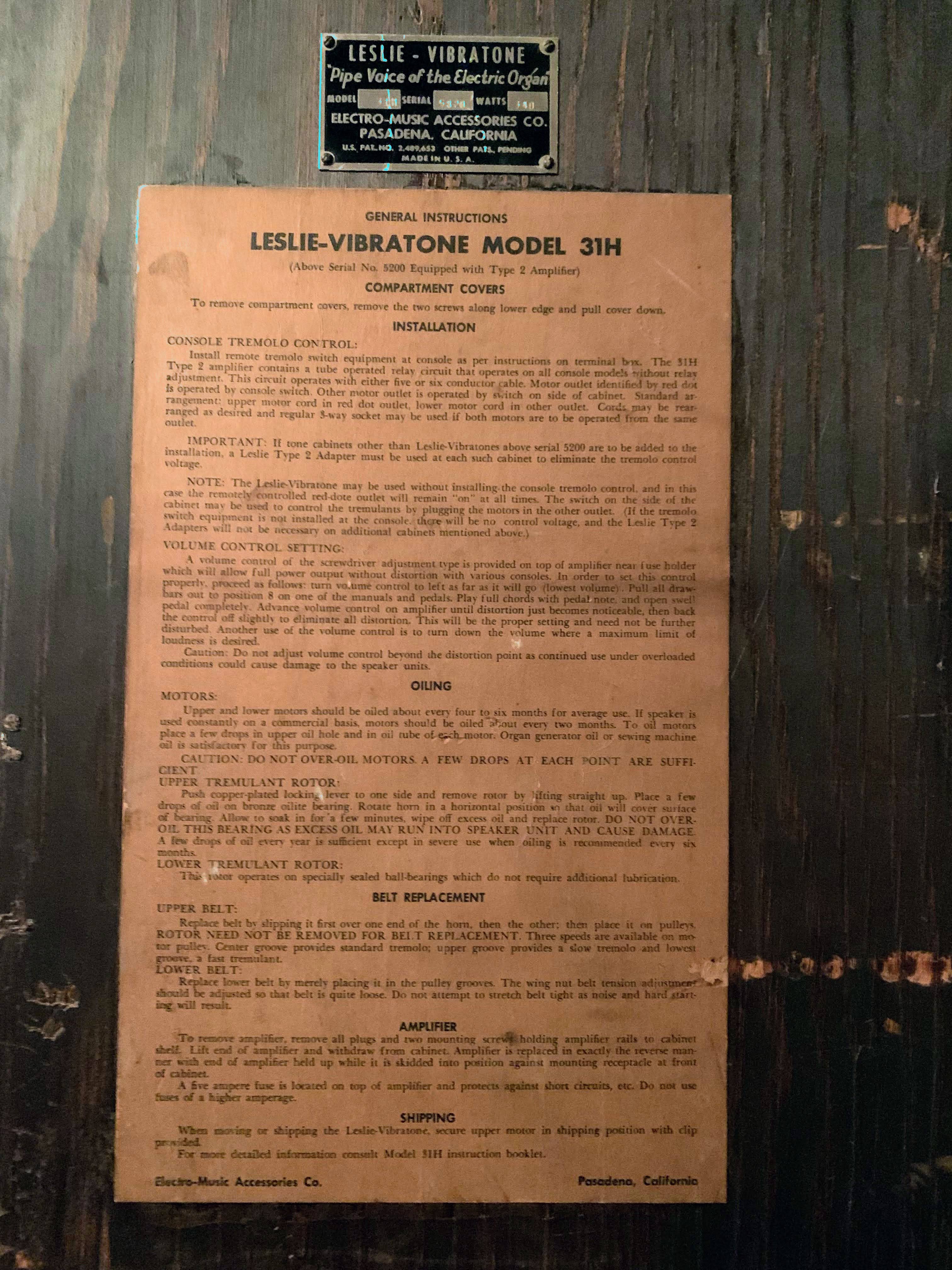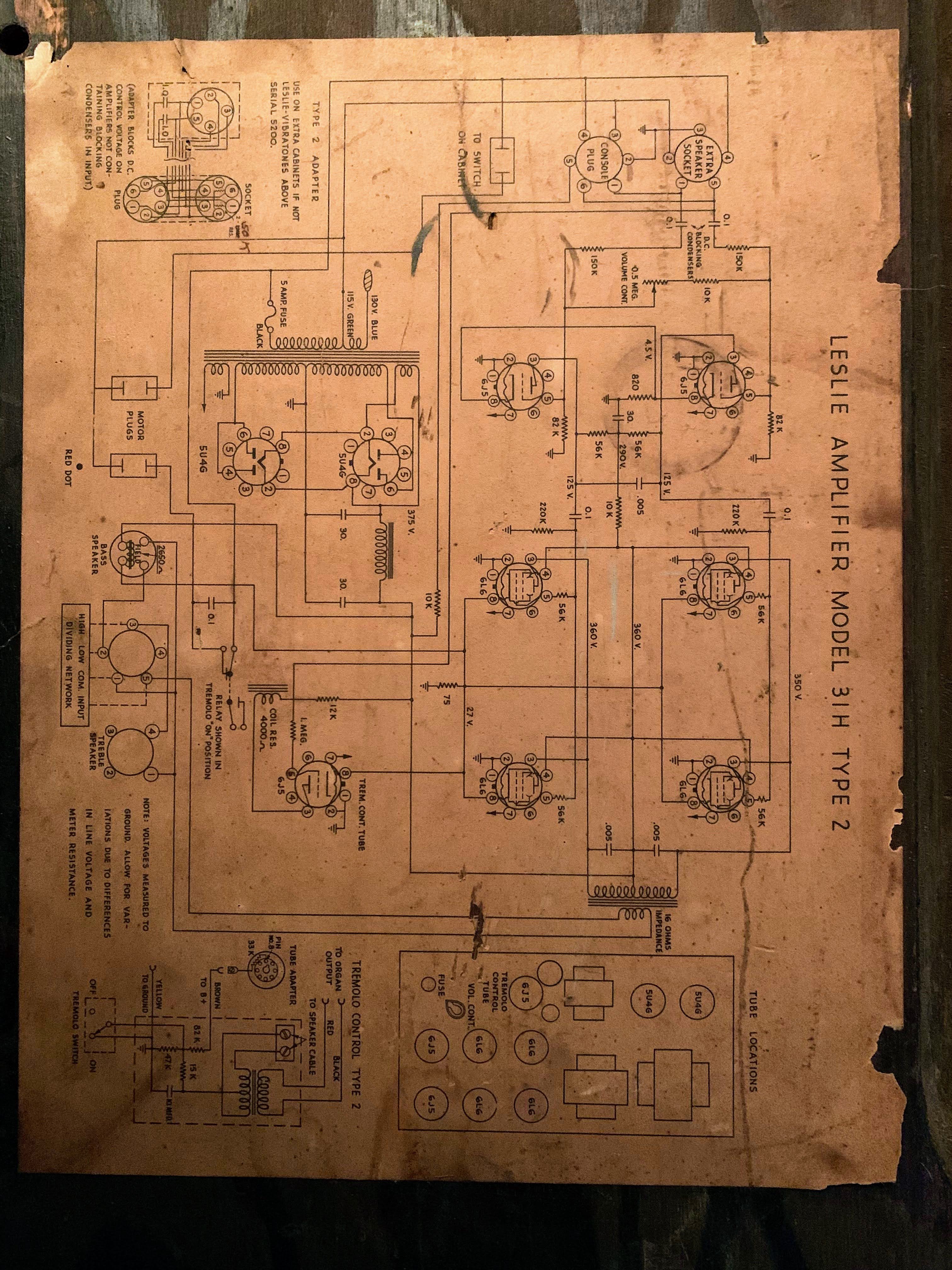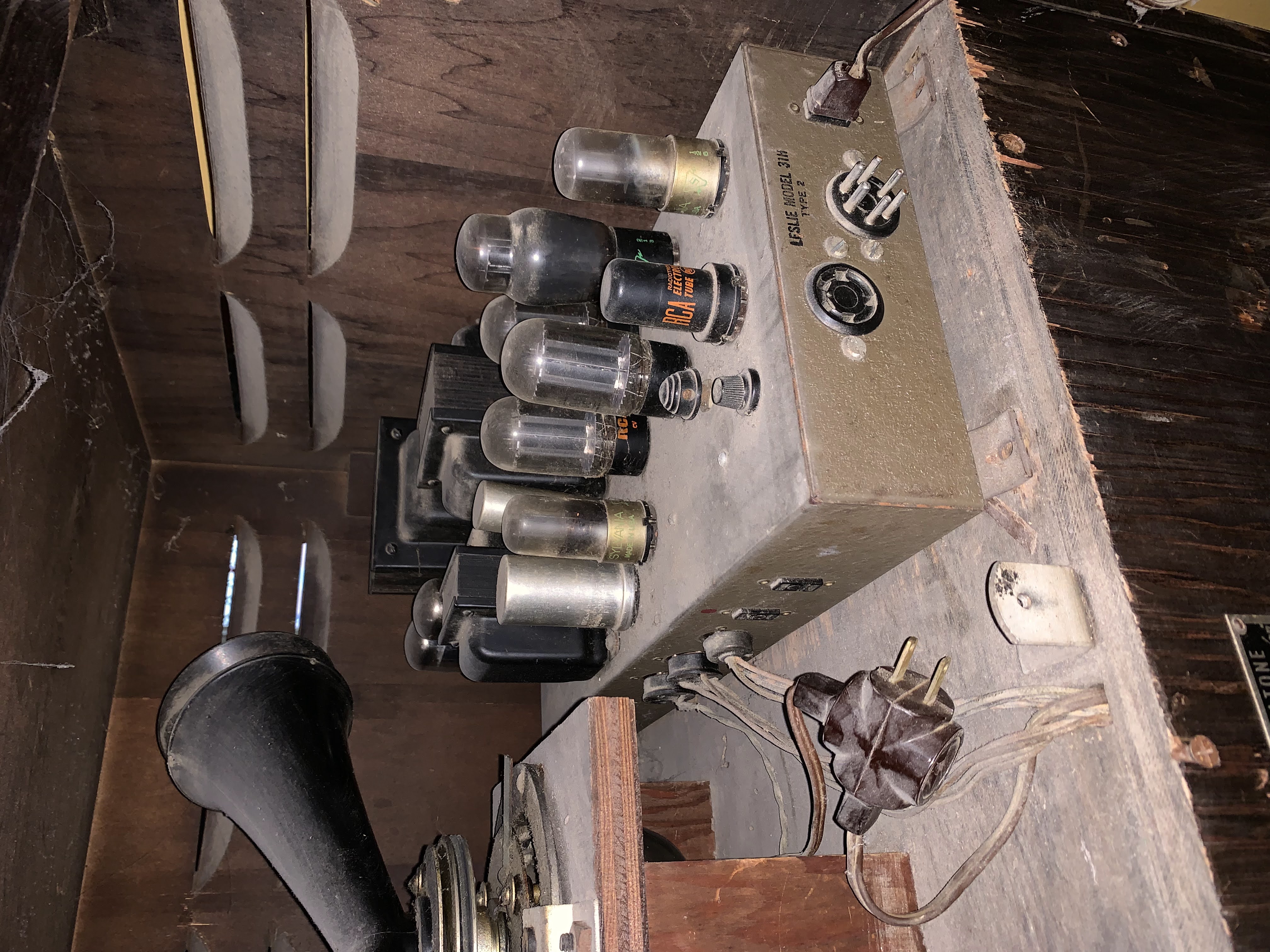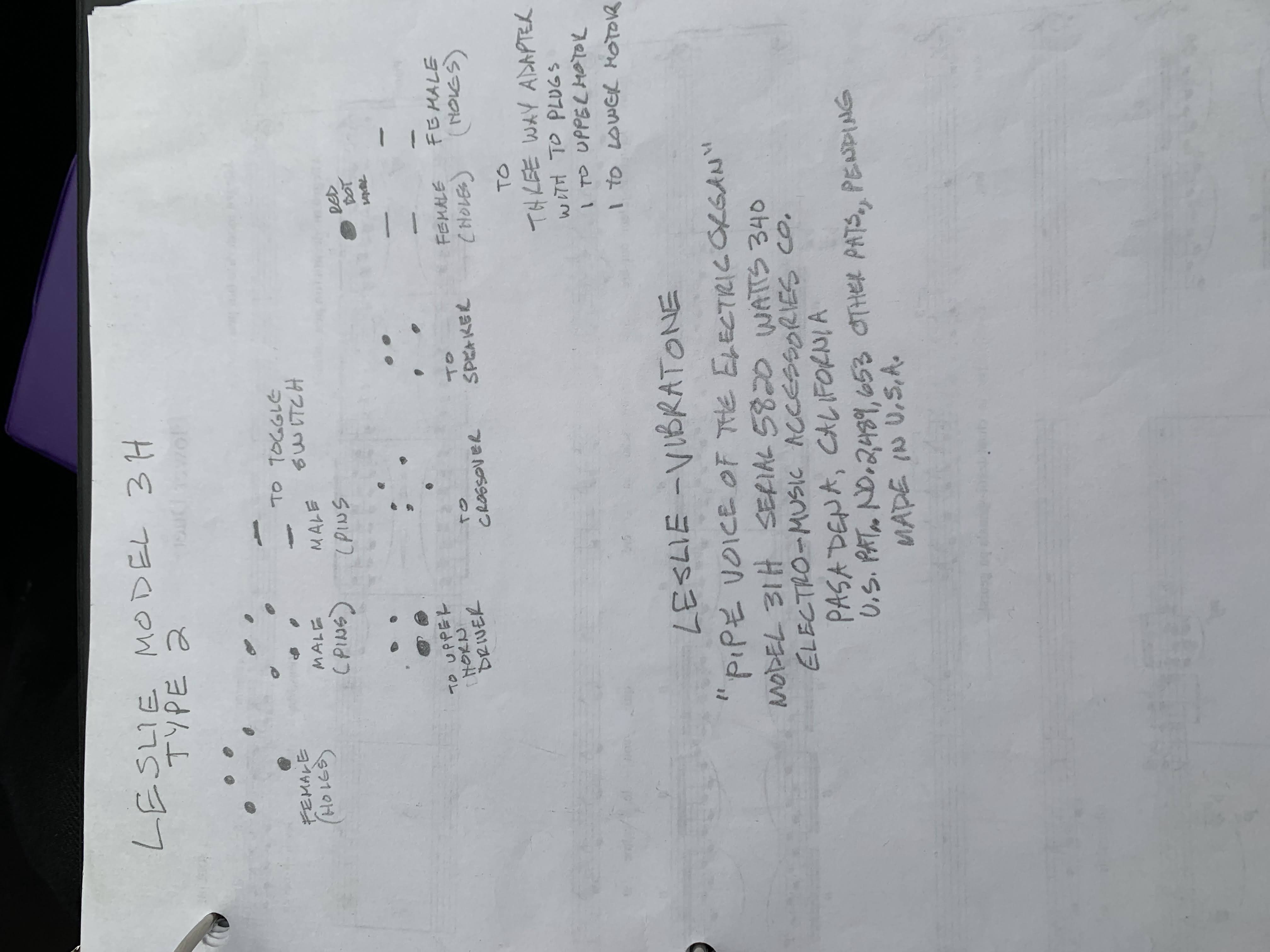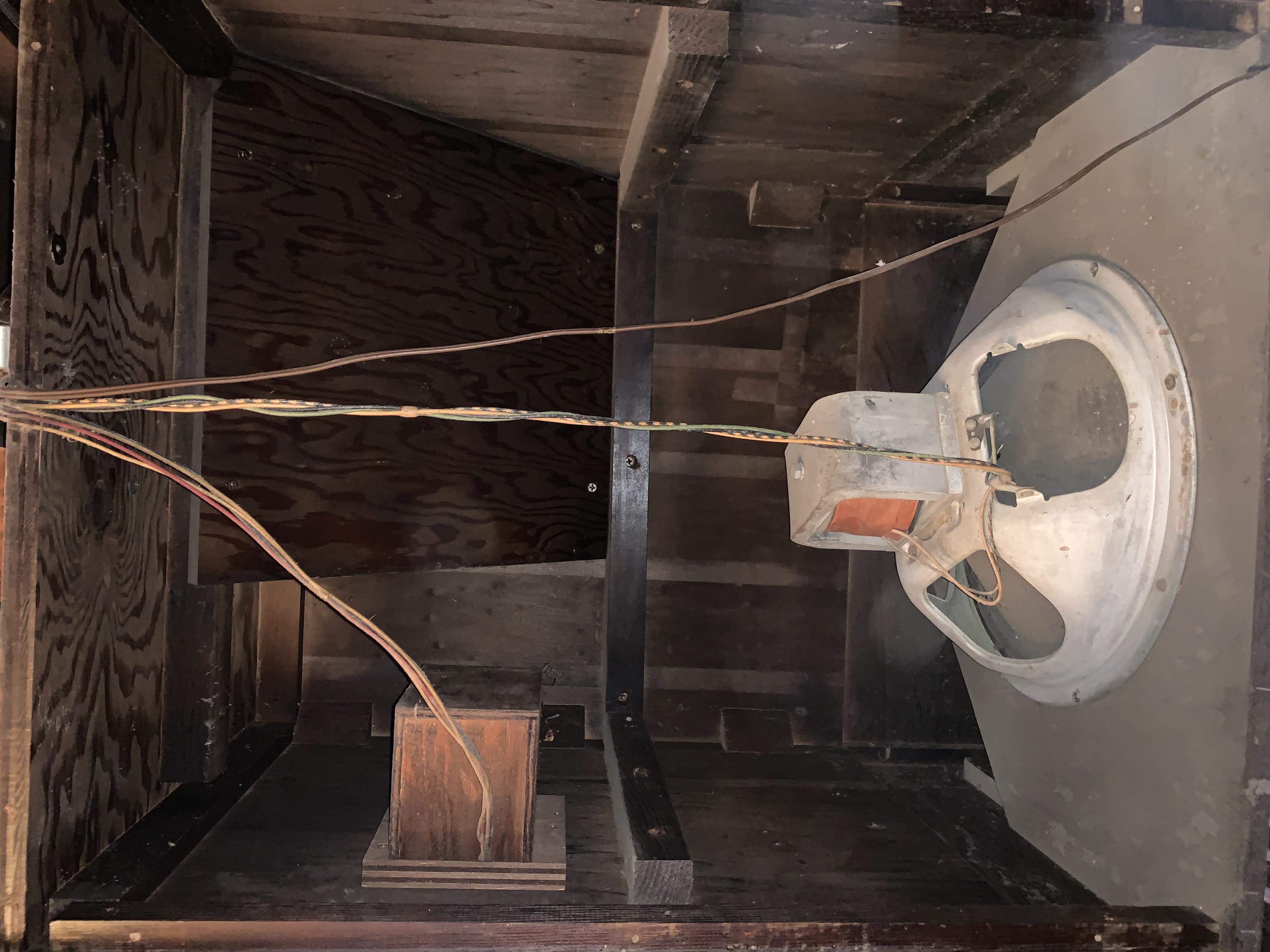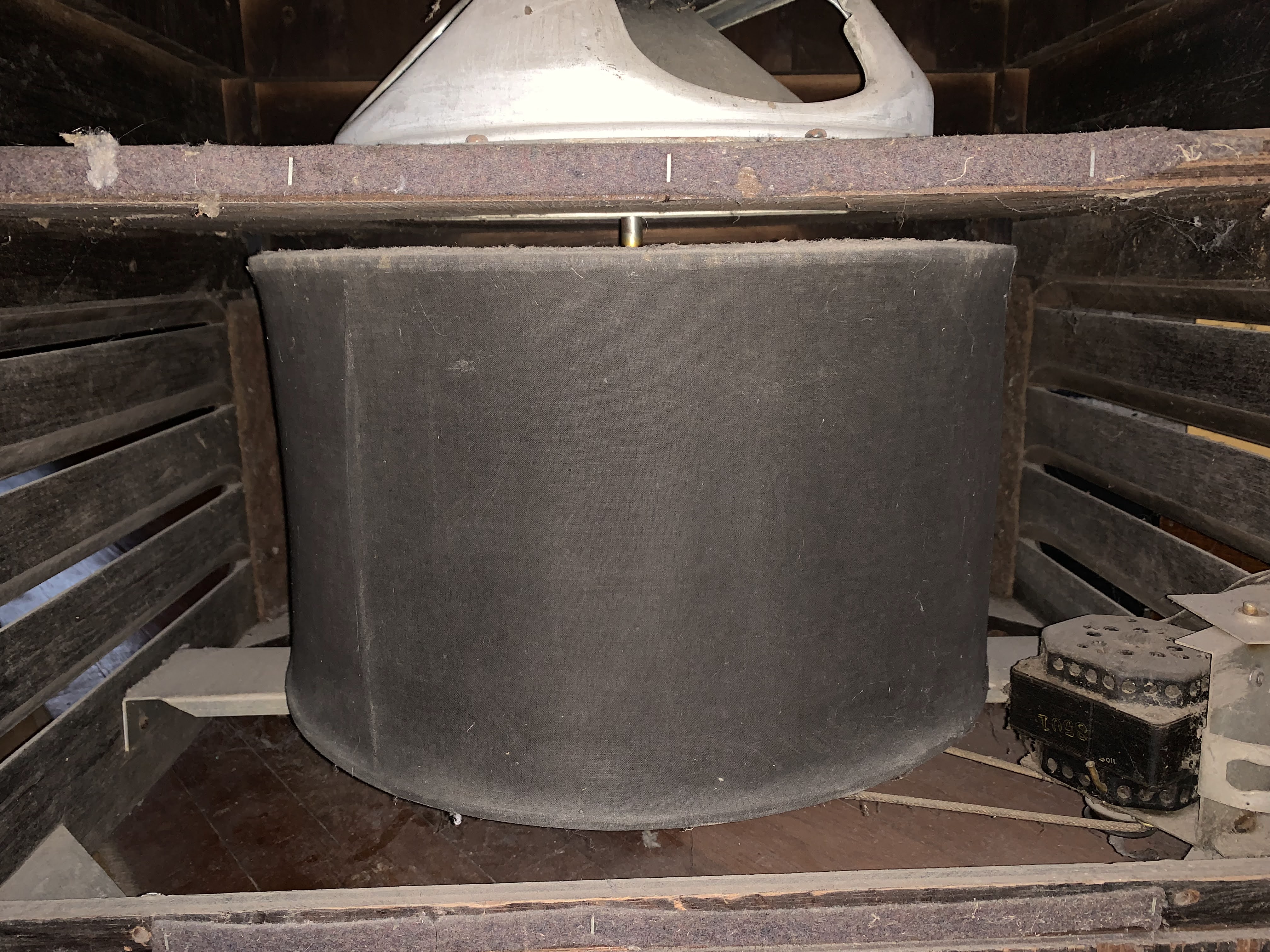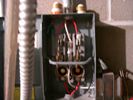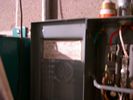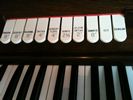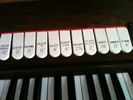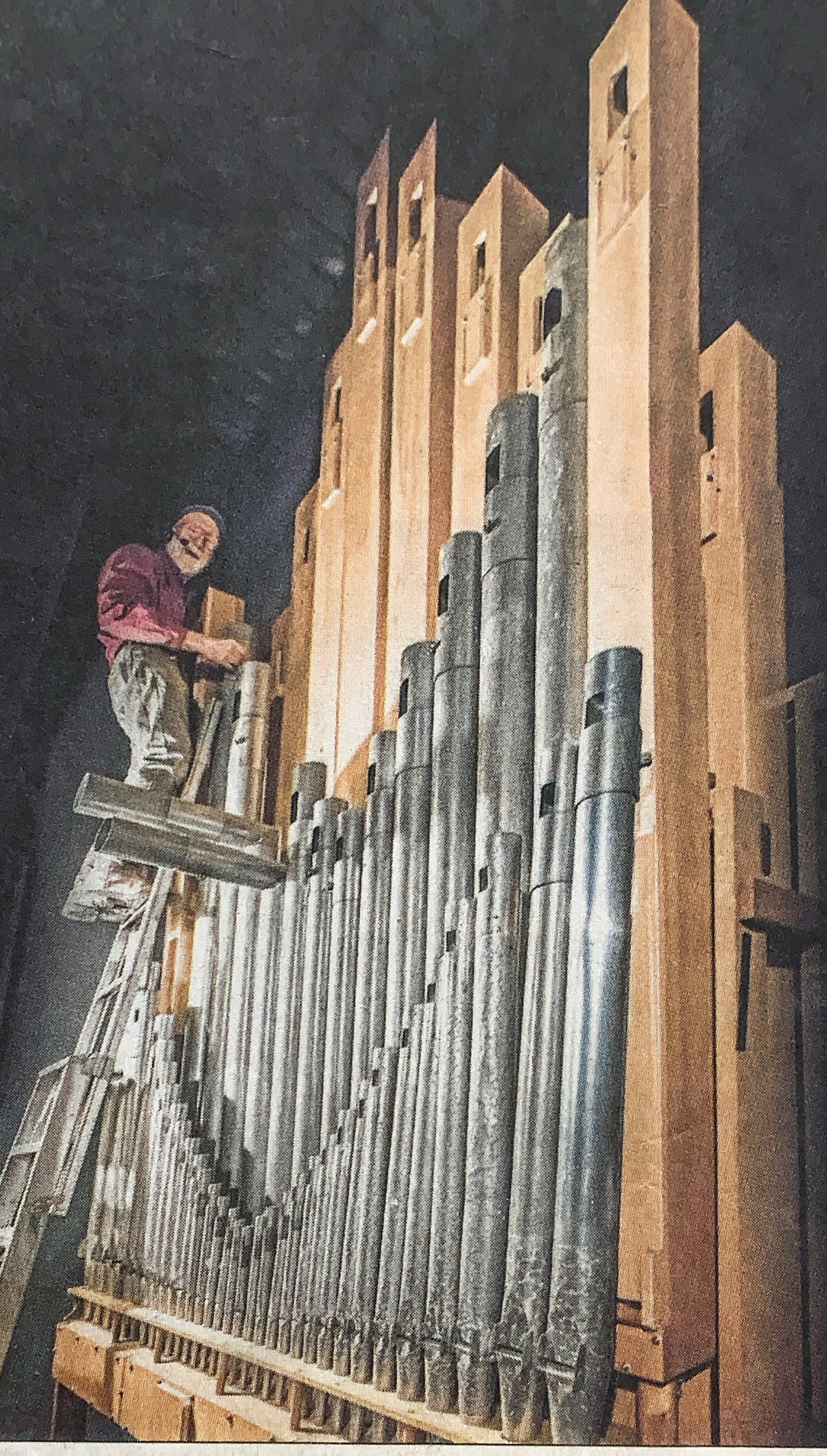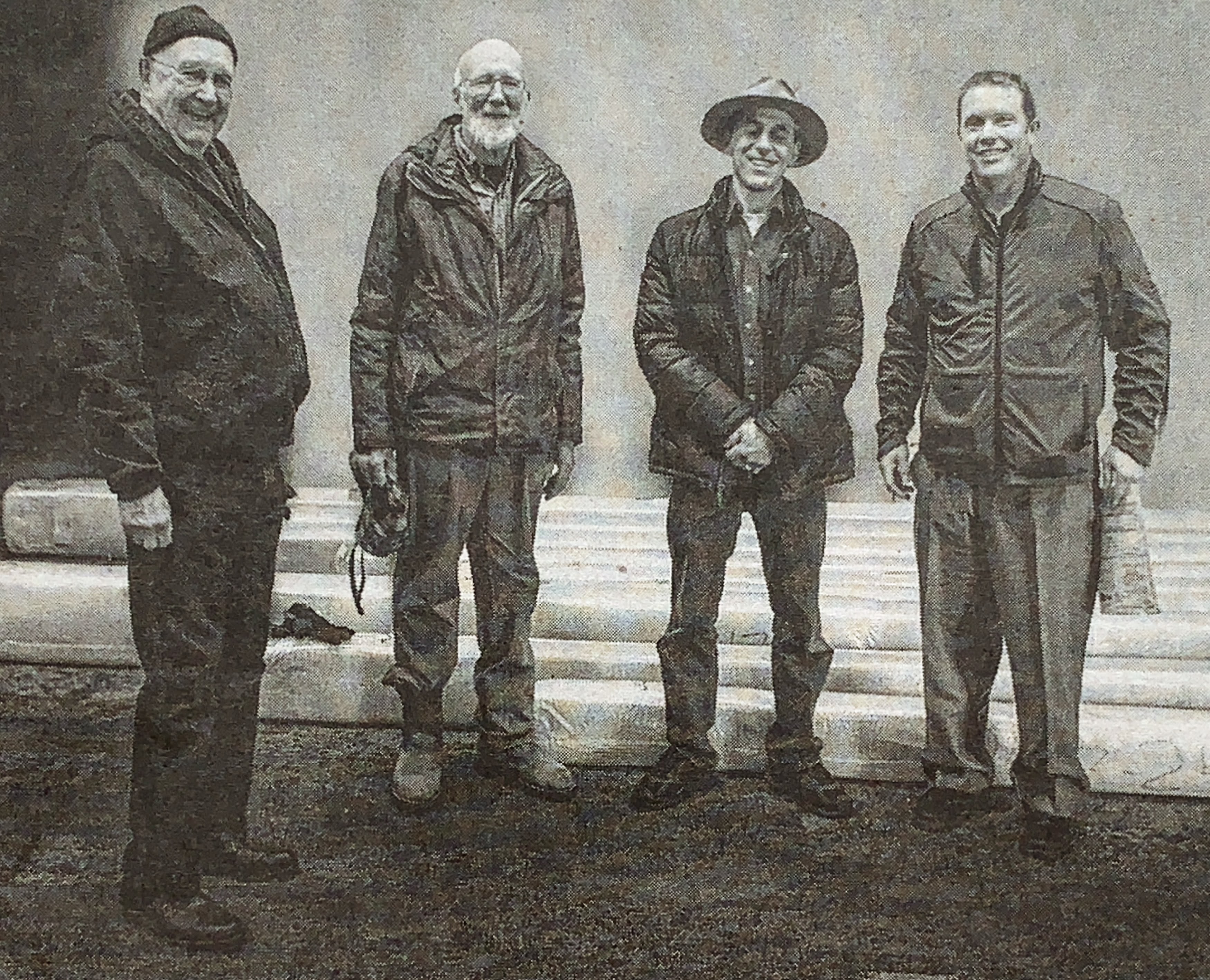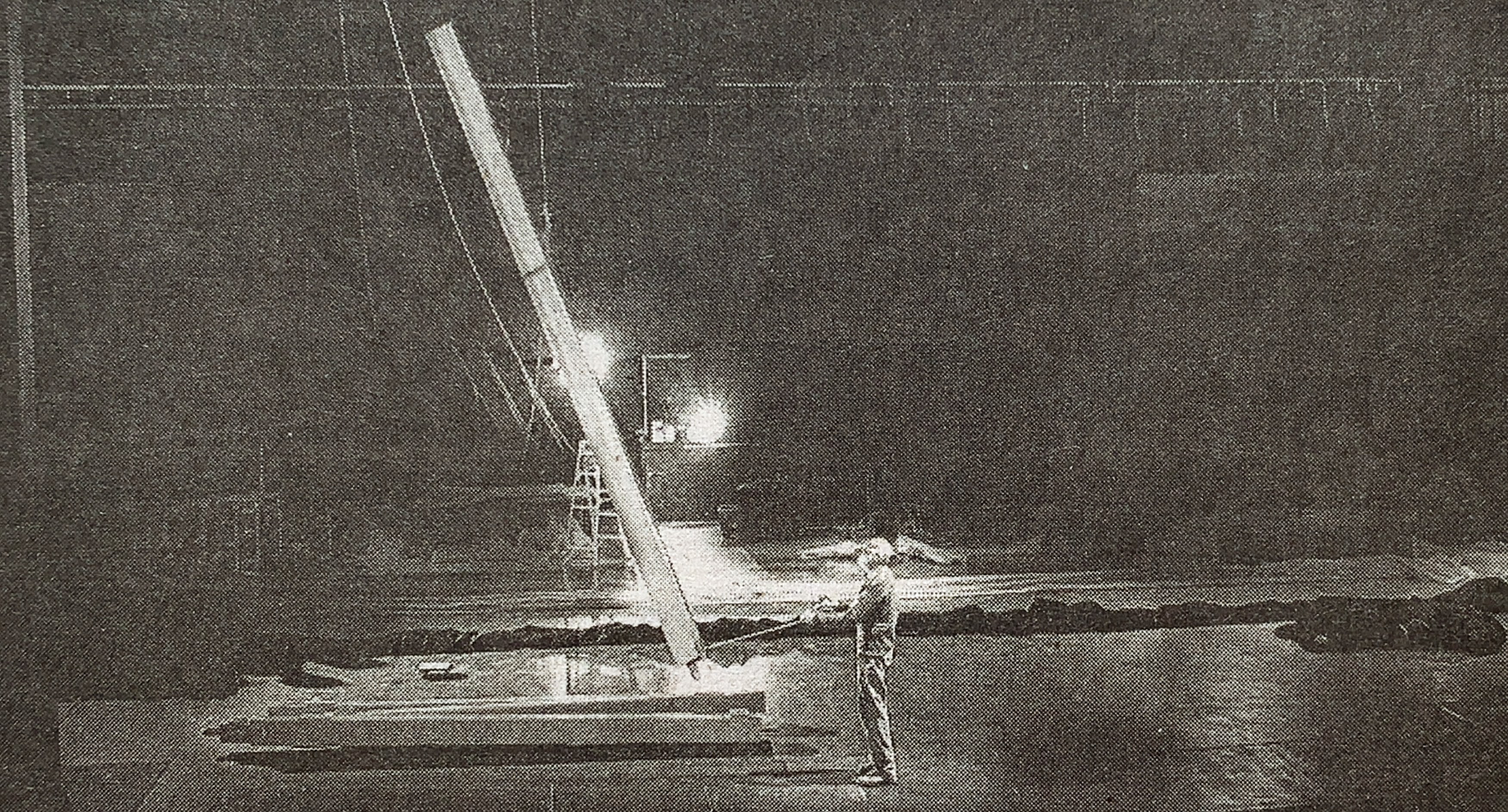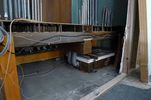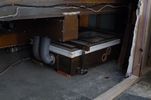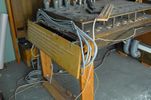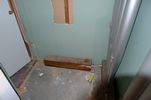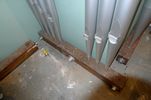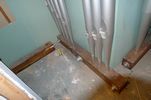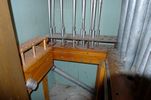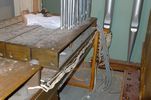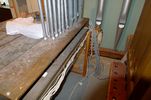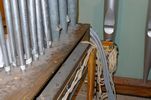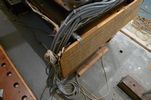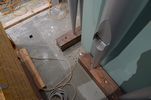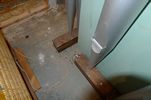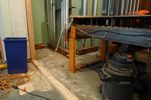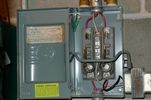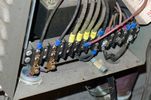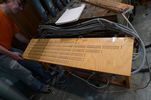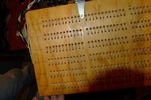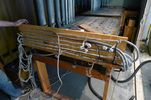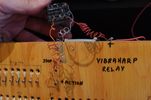Hammond C2 & Leslie 31H
My Pipe Organ
For upcoming installation in my living room
by Temple Organ, St. Joseph Missouri, 1986
5 ranks: Principal, Gedeckt, Salicional, Celeste, Trompette
Pipes replaced in Barhydt organ
By Andy Hallman, Ledger news editor
The organ committee of the Fairfield Arts & Convention Center raised enough money last year to make a long-needed upgrade to the Barhydt organ.
The Barhydt organ has sat in the Stephen Sondheim Center for the Performing Arts for about 10 years, ever since John Connett reassembled it after it was removed from Barhydt Chapel, built in 1909 on what was then the campus of Parsons College. Robert Glocke, the chief fundraiser for the organ's most recent renovation, said that when the organ was reassembled, its bass notes were not very strong.
Carroll Hansen of the Casavant Frères company told the committee that replacing the lowest 12 notes with wood pipes instead of metal would improve the resonance. It might not necessarily make the notes louder, but each note would have a more distinct sound.
Fundraising
The organ committee began fundraising to replace the 12 lowest pipes in May, and in just two months had raised the $24,000 needed. Wayne and Nan Kocourek of Chicago, Illinois, donated $16,000, and local donors supplied the rest.
The kocoureks donated $250,000 to the Fairfield Arts & Convention Center in January 2017. Nan, formerly of Fairfield, and her husband donated the money in memory of her parents Robert and Evelyn Gamrath, who graduated from Parsons College in the 1940s.
The wooden pipes arrived in February and were installed shortly thereafter by Connet and a few others. The first concert using the new pipes was March 20 featuring Ross Jallo. At least four concerts per year use the Barhydt organ, including as musical accompaniment for silent films such as "The Hunchback of Notre Dame" and "Phantom of the Opera."
"Our first concert of the year is always a silent movie," Glocke said. "We bring in an organist who specializes in music for silent films. They play a two-hour performance without stopping and with no music. It's all improvised."
'Pure sound'
Connet said the wooden pipes have improved the tonal quality of the low notes.
"Now there's a pure sound from the bottom end. Before, it sounded a bit mushy. It wasn't very clean," he said. "One of the pipes was sometimes playing the octave above where it was supposed to play."
The organ contains 1,700 pipes ranging in length from 15-19 feet, with the deep tones produced by the longest pipes. The pipes are not easily visible from the auditorium. Connet said one must look above the stage to see them. The new wooden pipes are visible only to the first two rows in the theater.
During concerts, the keyboard console is positioned front and center on the stage. Twelve wires connect the console to the pipes. This is a far cry from the way the console and pipes were connected before the age of computers. At the time the organ was removed from Barhydt Chapel, hundreds of wires ran between the two.
In the Barhydt Chapel
Organ committee member Doug Daller remembers those days fondly. In fact, he played the organ when it was in Barhydt Chapel. When he moved to Fairfield in 1983, there were no regular church services in the chapel, but that changed when the Liberal Catholic Church began hosting services there. Daller played piano, and his friends asked if he would mind playing the organ at church. He agreed, and played the organ every Sunday for six years.
"The organ was not in good shape at the time," he said. "There were bats in the pipes, and quite a few of them didn't work, but enough of them did that we could have a nice service."
Daller also played the organ after it was moved to the Sondheim. In fact, he wanted to show that it can play more than just church music. Joined by a rock band on stage, Daller performed The Beatles' hits "Strawberry Fields Forever" and "I Am the Walrus."
Barhydt Chapel was demolished in 2001. No one wanted the organ, so it was slated to be thrown away. Connet couldn't bear the thought of such a magnificent instrument ending up in the dump.
"Any organ should be preserved," he said. "It is so much better than electronic versions."
Daller said he is thrilled the organ was preserved and is in such good condition today.
"I wish more people knew how cool it is," he said. "It's a rare thing to have a monster pipe organ in a small town and have an expert come to play it. We have a rare opportunity here in Fairfield."
Connet related a similar comment he heard from an organist who told him how unusual it is to see a pipe organ outside church. Unless they go to a religious service in a church that has one, the public is missing out on a beautiful sound ... but not in Fairfield.
